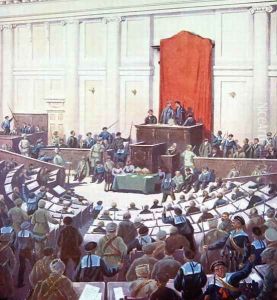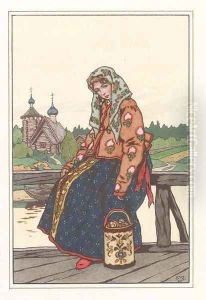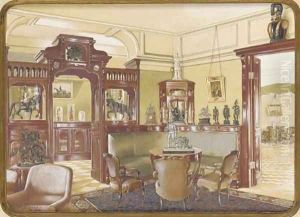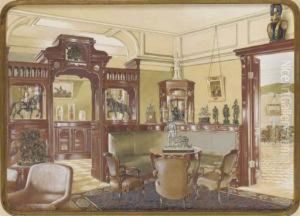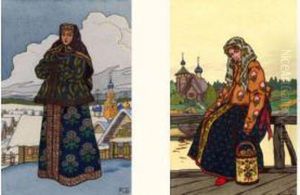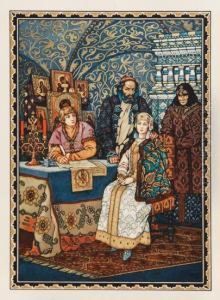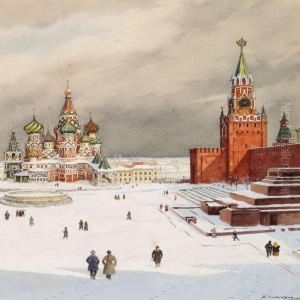Boris Zvorykine Paintings
Boris Dmitrievich Zvorykine was a Russian artist and illustrator born on October 23, 1872, in Moscow, Russia. He was a prominent figure in the Russian art scene during the late 19th and early 20th centuries. Zvorykine's work was greatly influenced by Russian folklore, history, and the art nouveau movement.
During his early years, Zvorykine studied at the Moscow School of Painting, Sculpture, and Architecture, where he was influenced by prominent Russian artists of the time. He later moved to Paris, which was a center for artists and intellectuals from all over the world. There, he continued his education at the École des Beaux-Arts and the Académie Julian, absorbing Western techniques and styles, which he would later blend with traditional Russian motifs.
Zvorykine was known for his vivid illustrations of Russian fairy tales and epic poems, such as those by Alexander Pushkin. His illustrations often featured intricate details, bold colors, and a dynamic composition that brought the stories to life. He worked on various projects, including book illustrations, theater set designs, and paintings. Despite living in France, he remained deeply connected to his Russian heritage, which was evident in his art.
The Russian Revolution of 1917 and the subsequent societal changes had a significant impact on Zvorykine's life and work. Like many Russian émigrés, he experienced a sense of loss and nostalgia for his homeland, which was now under communist rule. His later work often reflected a romanticized version of pre-revolutionary Russia.
Boris Zvorykine's career spanned several tumultuous periods in Russian and European history, including World War I, the Russian Revolution, and World War II. Despite the challenges, he continued to work and create art that celebrated Russian culture and history. He remained in France for the rest of his life, passing away on August 31, 1942, in Vanves, near Paris. His works continue to be appreciated for their rich detail and cultural significance, offering a window into the Russian soul and imagination.
